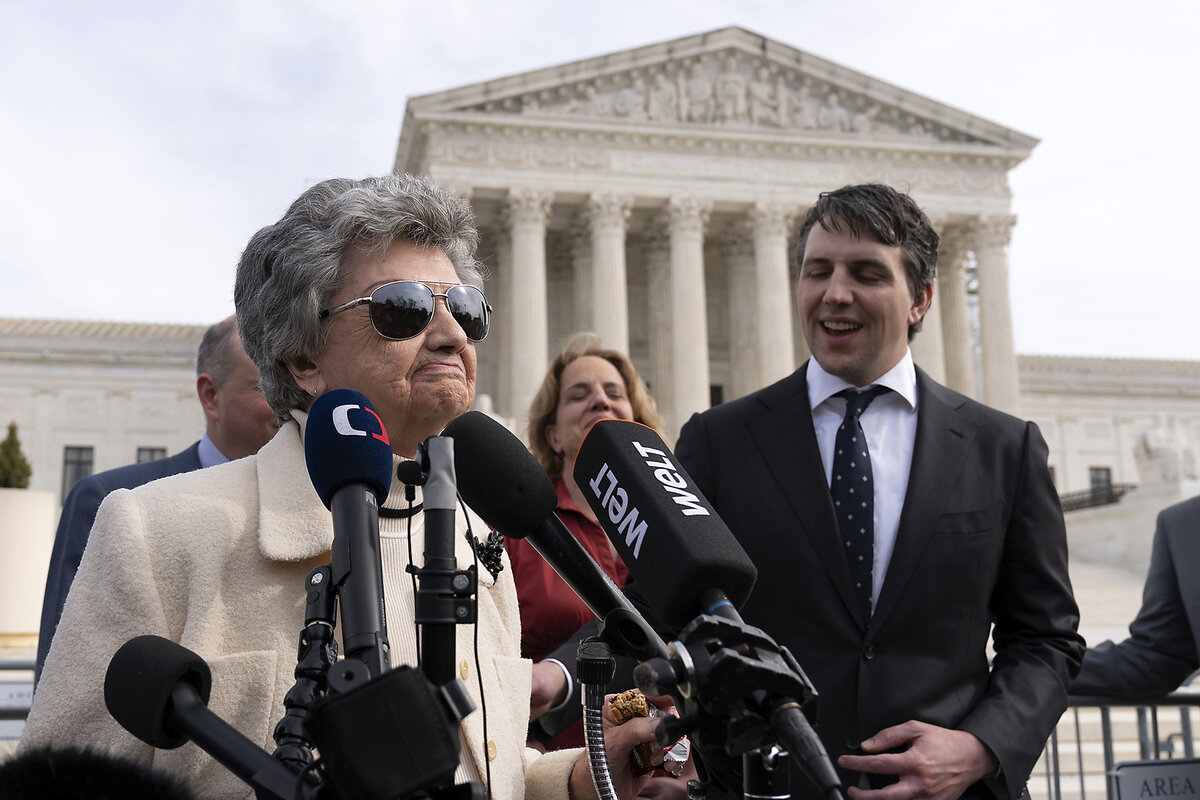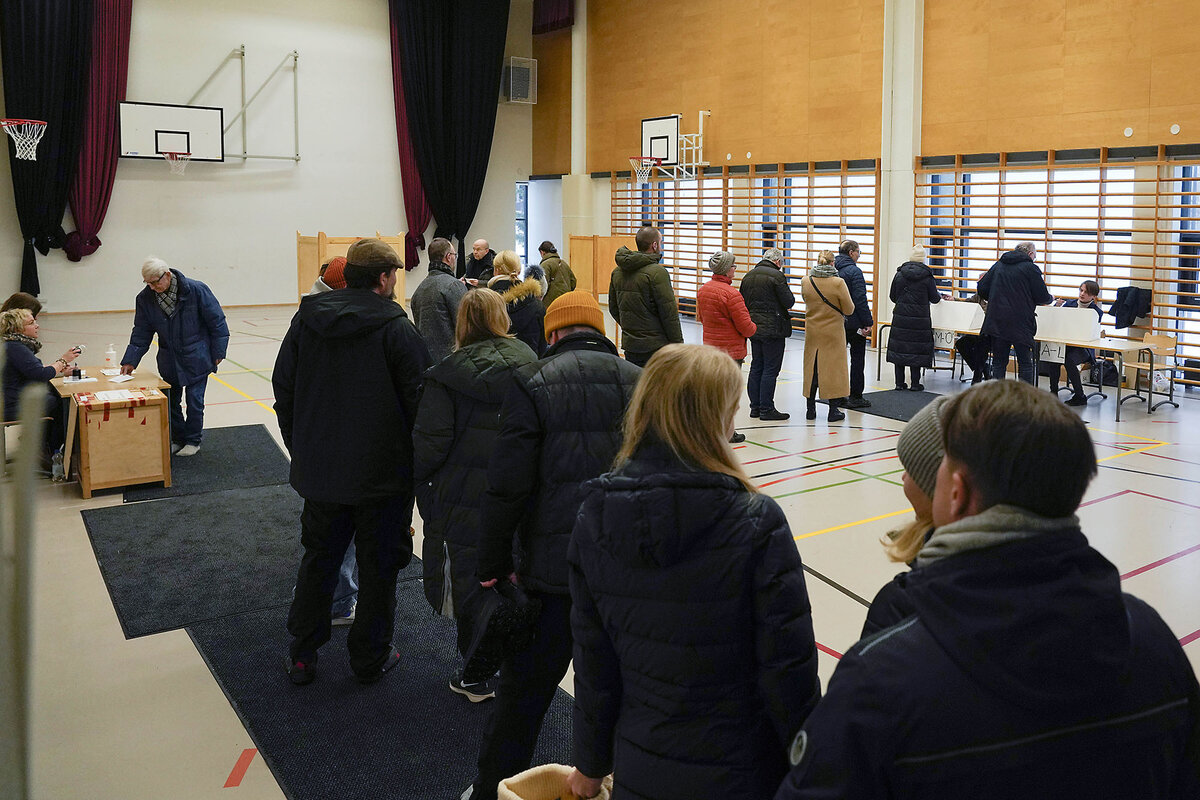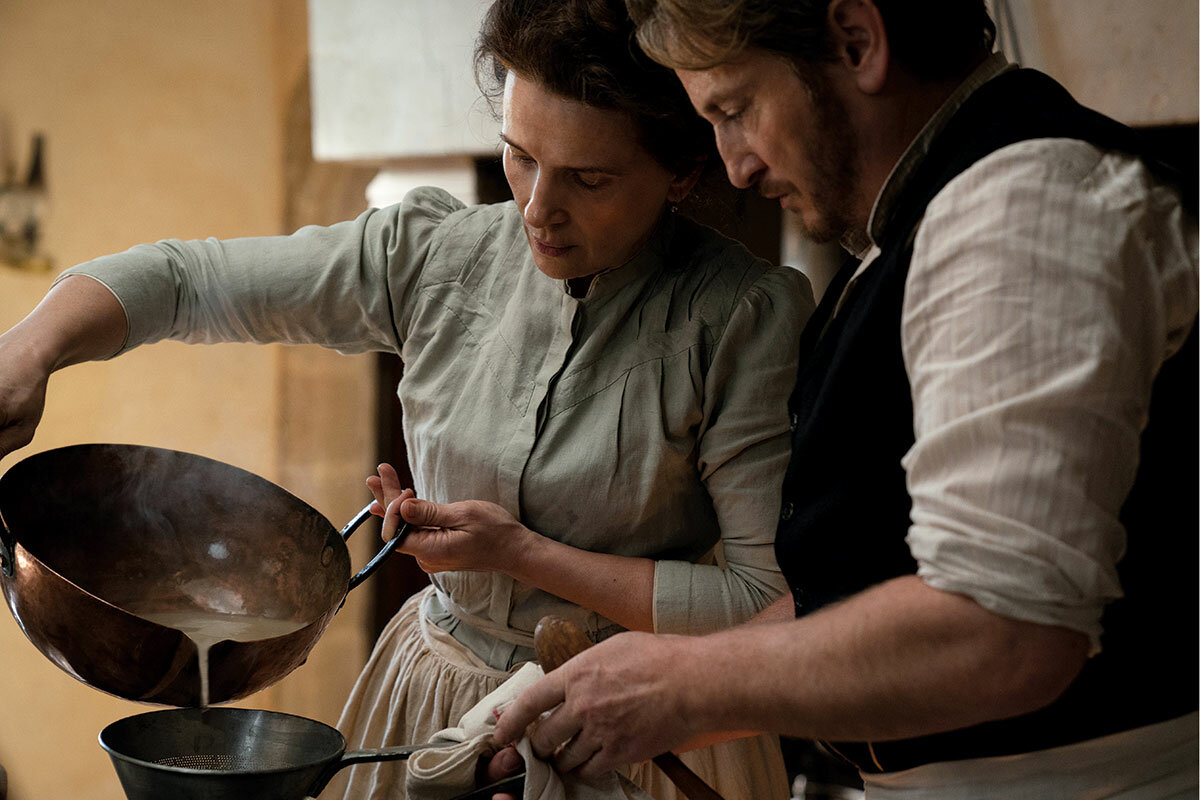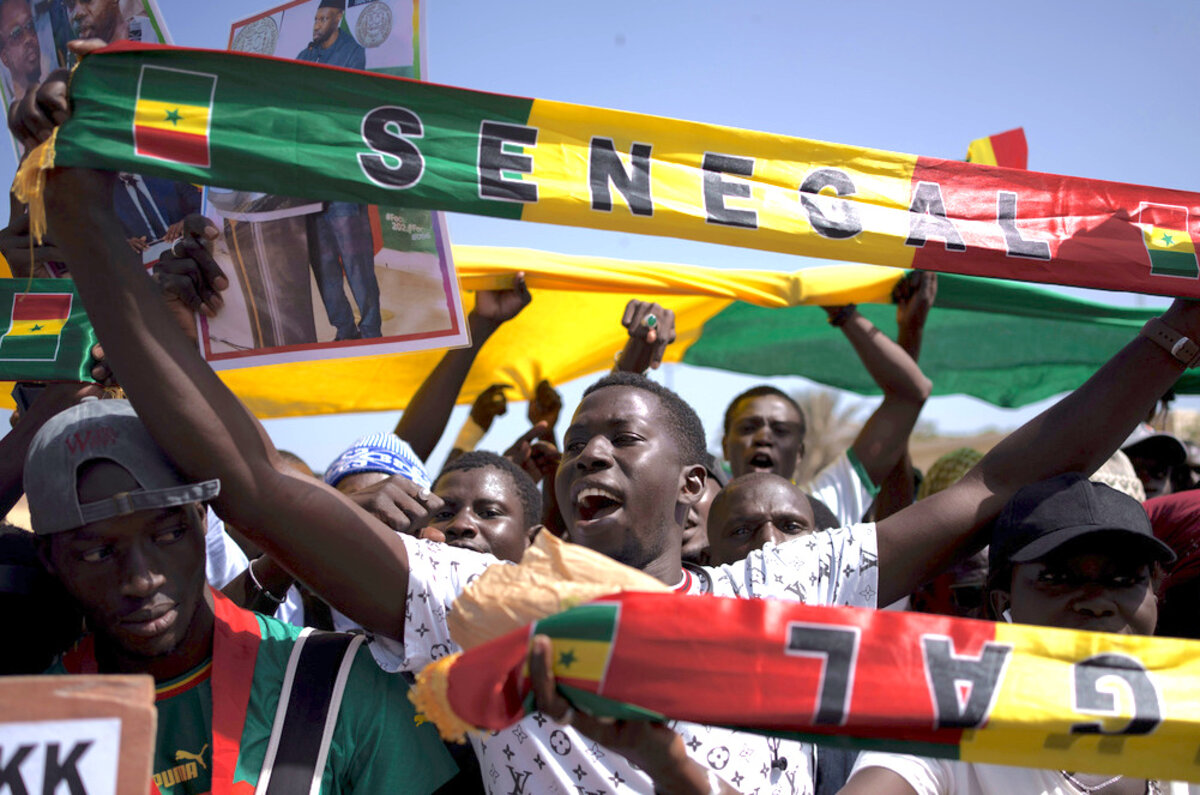Can a Civil War-era provision barring insurrectionists from public office mean Donald Trump can be removed from presidential ballots? The U.S. Supreme Court appeared skeptical during oral argument – and concerned more about the future than about the past.

Why is Christian Science in our name?
Our name is about honesty. The Monitor is owned by The Christian Science Church, and we’ve always been transparent about that.
The Church publishes the Monitor because it sees good journalism as vital to progress in the world. Since 1908, we’ve aimed “to injure no man, but to bless all mankind,” as our founder, Mary Baker Eddy, put it.
Here, you’ll find award-winning journalism not driven by commercial influences – a news organization that takes seriously its mission to uplift the world by seeking solutions and finding reasons for credible hope.
Explore values journalism About usMonitor Daily Podcast
- Follow us:
- Apple Podcasts
- Spotify
- RSS Feed
- Download
Enmity can run so deep that the prospect of easing it seems nonexistent. Israel and Hamas sit in that category.
Still, the elevation last week of a Sinn Fein leader to first deputy for Northern Ireland could scarcely have been imagined in the years of nail-bomb separatism, understatedly known as the Troubles. It took time. The agreement that cooled those hostilities dates back 26 years.
Columnist Ned Temko takes a clear-eyed view of global events. He’s also inclined to showcasing informed, credible hope. In his October appearance on our weekly podcast, Ned expressed long-term optimism about a Middle East solution. Today, in his Patterns column, he mines history to outline a possible path to progress there.
Already a subscriber? Log in
Help fund Monitor journalism for $11/ month
Monitor journalism changes lives because we open that too-small box that most people think they live in. We believe news can and should expand a sense of identity and possibility beyond narrow conventional expectations.
Our work isn't possible without your support.
Today’s stories
And why we wrote them
( 5 min. read )
Today’s news briefs
• No charges for Biden: President Joe Biden “willfully” retained and disclosed highly classified materials when he was a private citizen, a special counsel report finds. The harshly critical assessment also details the reasons he should not be charged.
• Ukraine army shake-up: President Volodymyr Zelenskyy replaces his top general as part of a shift in strategy as the conflict with Russia grinds into its third year and Ukraine grapples with shortages of ammunition and personnel.
• Israel steps up war: Its forces bomb the border city of Rafah, where more than half of Gaza’s population now shelters, a day after Prime Minister Benjamin Netanyahu rejected a proposal to end the war in the Palestinian enclave.
• Iceland volcano erupts: The Feb. 8 eruption, the third since December, triggers the evacuation of the popular Blue Lagoon spa and cuts several communities off from their heat and hot water supply.
A deeper look
( 11 min. read )
We all think we know the narrative about trust and politics, and it’s not good. But the real story is more complicated – and surprising.
Patterns
( 4 min. read )
Here’s that column by Ned. Amid intense conflict, such as in Gaza, even the mention of peace can seem naive. But history shows that a tenacious commitment to it can break through seemingly irreconcilable differences.
( 4 min. read )
Saying hello can go a long way in building social connections, and researchers in London found a simple way to encourage such behavior. But their study raises questions about the barriers modern humans face in creating community.
On Film
( 3 min. read )
Food in films is often a metaphor for what is really going on in people’s lives. French offering “The Taste of Things” extends that idea, offering one of the most romantic movie moments our critic has ever seen.
The Monitor's View
( 3 min. read )
In a year shaped by elections in at least 64 countries, there will be fresh material for measuring the global health of democracy. In one West African country, a ballot crisis reveals exactly what that health rests on.
On Feb. 3, President Macky Sall of Senegal postponed elections due later this month, citing allegations of corruption by the judicial body that determines the eligibility of candidates. His decision marks the first time that Africa’s most successful model of the peaceful transfer of power – four since 1960 – may be broken. It raises concerns of further erosion of legitimate governance on a continent beset by multiple military coups in recent years.
Yet within Senegalese society, Mr. Sall’s move has prompted a diverse and robust response shaped by strong traditions of dialogue, dignity, and the democratic rule of law. Civil society groups and trade unions launched a new platform today called Let’s Protect Our Election. Young Senegalese are reenergizing a movement launched by rappers and journalists a decade ago to promote peaceful civic participation.
Opposition candidates, meanwhile, are turning to the courts, despite a weakening of judicial independence in recent years. Rather than demonizing the president, some have accepted his call for dialogue with an assumption of good faith.
“Macky Sall was a beacon of hope,” Khalifa Sall (no relation), a presidential candidate and former mayor of Dakar, told Le Monde. “We believe that [he] is endowed with reason. We don’t despair that he will recover it.” In power since 2012, the president is constitutionally barred from seeking a third term.
The defenses of Senegalese democracy run deep. “The tradition of associations is deeply entrenched in Senegalese culture,” reflected in a legal environment that encourages civic participation, notes the Washington-based International Center for Not-For-Profit Law. A mutually reinforcing set of expectations – “transmitting values” – endures between the government and armed forces that is rare in Africa.
“We can’t emphasize enough soldiers understanding their role and place in society and of respect for civilian authority,” an army colonel told the Africa Center for Security Studies in December. “But ... military professionalism must be balanced by civilian professionalism on the other side of the scale.”
Collectively, civil society and Senegal’s democratic institutions have brushed back earlier attempts to thwart the country’s constitutional norms – in 2012, when then-President Abdoulaye Wade tried to seek a third term, and again last July, when Mr. Sall considered a similar move. A disputed or derailed election now, the Institute of War Studies observed Wednesday, could exacerbate the grievances of Senegalese youth over lack of economic opportunity.
Yet an underlying confidence endures. As the polling group Afrobarometer confirmed this week, while the proportion of Senegalese citizens who express satisfaction with the way democracy works in their country has fallen 24% during Mr. Sall’s tenure, 84% nonetheless say they prefer democracy over any other system.
“A country must be built on dialogue because it is dialogue that builds a country,” said Imam El Hadj Malick Niang, during an interfaith rally for peace and democracy last year.
Relying on that wisdom now, the people of Senegal can show that the health of their democracy depends as much on their own actions as on those of their elected leaders.
A Christian Science Perspective
Each weekday, the Monitor includes one clearly labeled religious article offering spiritual insight on contemporary issues, including the news. The publication – in its various forms – is produced for anyone who cares about the progress of the human endeavor around the world and seeks news reported with compassion, intelligence, and an essentially constructive lens. For many, that caring has religious roots. For many, it does not. The Monitor has always embraced both audiences. The Monitor is owned by a church – The First Church of Christ, Scientist, in Boston – whose founder was concerned with both the state of the world and the quality of available news.
( 1 min. read )
In this poem, the author shares a spiritual lesson she learned from freeing a trapped bird.
Viewfinder

A look ahead
Thanks, as always, for reading the Daily. Tomorrow, our Las Vegas-based writer, Jackie Valley, will look at her city’s transformation – much of it owing to pro sports – as that city gears up for Super Bowl weekend, along with fans of American-style football everywhere.
Also, Editor Mark Sappenfield joins our “Why We Wrote This” podcast to talk about our Rebuilding Trust project and more.









